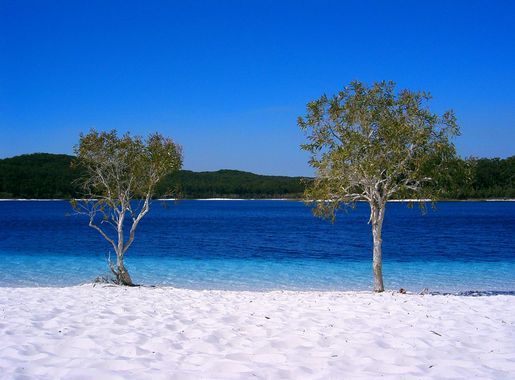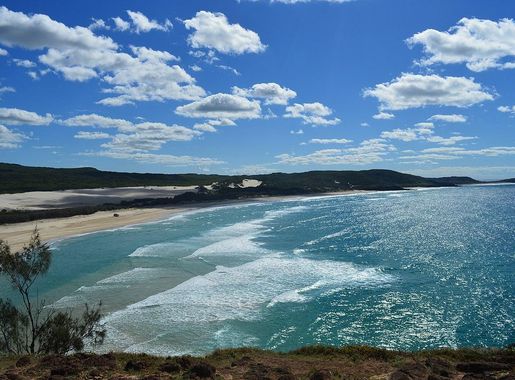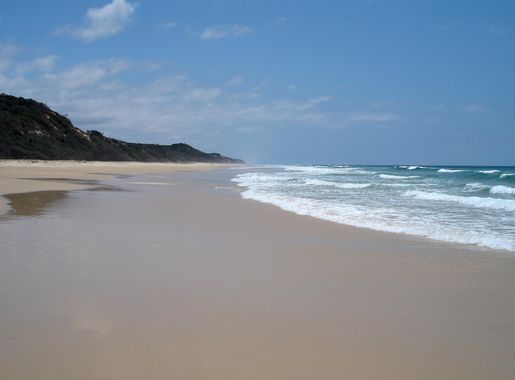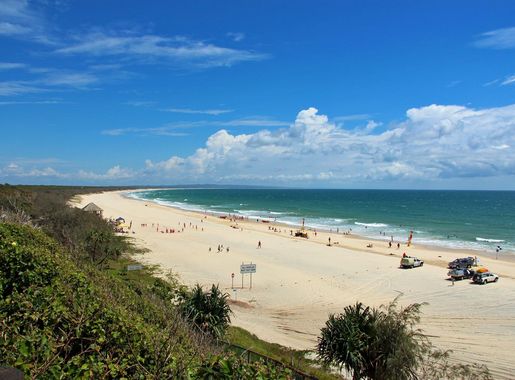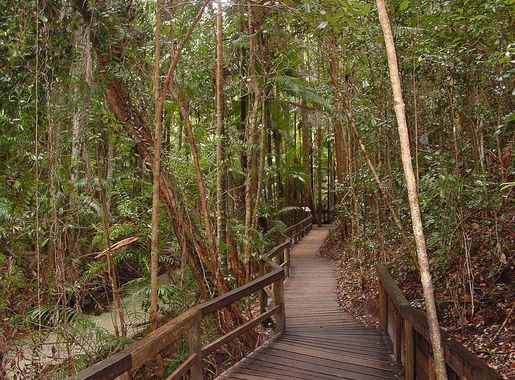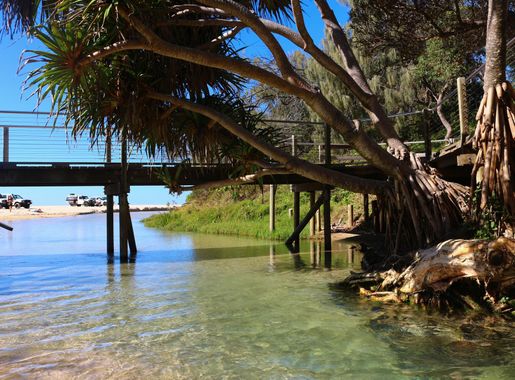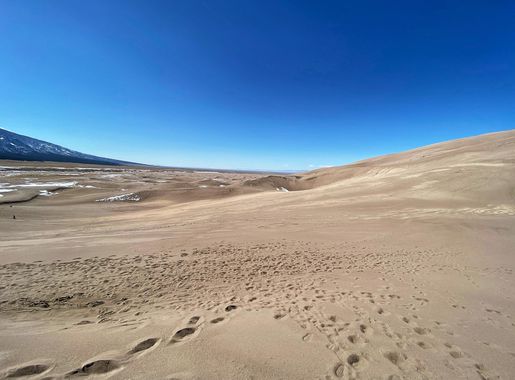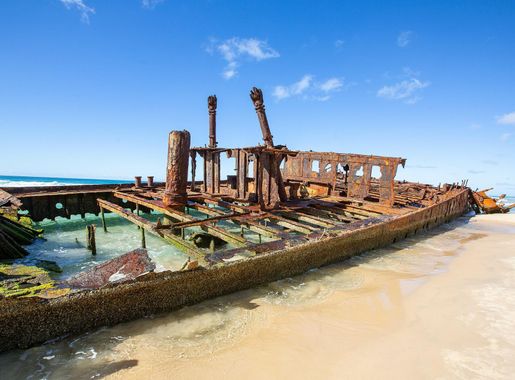
Exploring the Wonders of Great Sandy National Park
Discover the diverse landscapes and natural wonders of Great Sandy National Park, from the world's largest sand island to lush rainforests and scenic coastal views.
Great Sandy National Park in Australia is a vast expanse of natural beauty, offering a diverse array of landscapes and activities for visitors. From the golden stretches of beach on the eastern coast to the lush rainforests and towering sand dunes, this park is a haven for nature enthusiasts and adventure seekers alike. One of the park's most famous features is Fraser Island, the largest sand island in the world. Here, you can explore the crystal-clear waters of Lake McKenzie, hike through ancient rainforests, and marvel at the colorful sand cliffs. The island is also home to a rich array of wildlife, including the iconic dingo. In addition to Fraser Island, the park includes the Cooloola Recreation Area, known for its scenic drives and stunning coastal views. Visitors can enjoy a range of activities such as fishing, camping, and bird watching. The Noosa River, which winds through the park, provides a tranquil setting for kayaking and boating. Whether you're looking to relax on the beach or embark on an outdoor adventure, Great Sandy National Park has something for everyone.
Local tips in Great Sandy National Park
- Visit during the cooler months (May to October) for more comfortable weather and fewer insects.
- If you plan to drive on Fraser Island, ensure your vehicle is a 4WD and check tide times for safe beach driving.
- Bring insect repellent and sunscreen, as protection from bugs and the sun is essential.
- Book campsites and permits in advance, especially during peak holiday seasons.
- Keep a safe distance from dingoes and do not feed them, as they are wild animals and can be dangerous.
Exploring the Wonders of Great Sandy National Park
Great Sandy National Park in Australia is a vast expanse of natural beauty, offering a diverse array of landscapes and activities for visitors. From the golden stretches of beach on the eastern coast to the lush rainforests and towering sand dunes, this park is a haven for nature enthusiasts and adventure seekers alike. One of the park's most famous features is Fraser Island, the largest sand island in the world. Here, you can explore the crystal-clear waters of Lake McKenzie, hike through ancient rainforests, and marvel at the colorful sand cliffs. The island is also home to a rich array of wildlife, including the iconic dingo. In addition to Fraser Island, the park includes the Cooloola Recreation Area, known for its scenic drives and stunning coastal views. Visitors can enjoy a range of activities such as fishing, camping, and bird watching. The Noosa River, which winds through the park, provides a tranquil setting for kayaking and boating. Whether you're looking to relax on the beach or embark on an outdoor adventure, Great Sandy National Park has something for everyone.
When is the best time to go to Great Sandy National Park?
Unmissable attractions to see
The Ginger Factory
Discover the magic of ginger at The Ginger Factory in Yandina, Queensland - A delightful blend of culinary experiences and family fun.
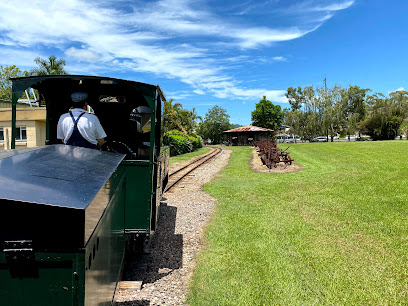
The Big Pineapple
Discover the charm of The Big Pineapple, a quintessential Queensland tourist attraction showcasing agriculture, wildlife, and breathtaking landscapes.

Hell's Gates
Explore the awe-inspiring natural beauty of Hell's Gates in Noosa Heads, Queensland, where stunning coastal views await every visitor.
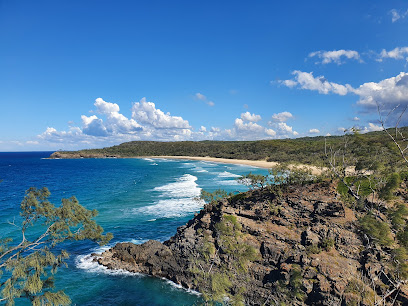
Fairy Pools
Explore the enchanting Fairy Pools in Noosa Heads, a natural oasis of crystal-clear waters and breathtaking coastal views.
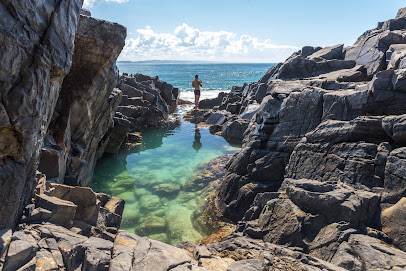
Dolphin Feeding Tin Can Bay
Discover the joy of feeding wild dolphins at Tin Can Bay, where unforgettable marine encounters meet stunning natural beauty.
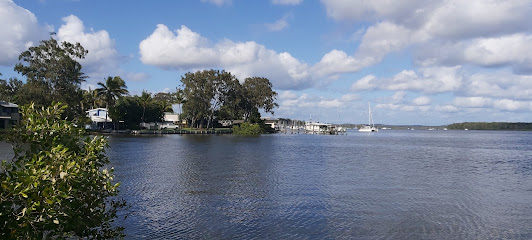
Boiling Pot Lookout
Experience stunning coastal views and vibrant wildlife at Boiling Pot Lookout, a scenic gem along Noosa's Coastal Walk in Queensland, Australia.
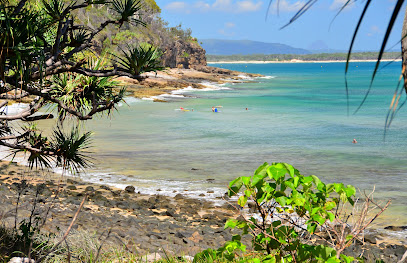
Epic Ocean Adventures Noosa
Experience the thrill of kayaking and surfing with Epic Ocean Adventures in Noosa, surrounded by stunning coastal beauty and adventure.
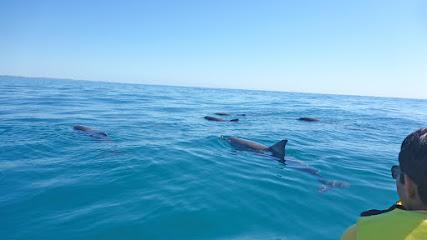
Tea Tree Bay Beach
Experience the tranquil beauty of Tea Tree Bay Beach, a pristine paradise in Noosa National Park, perfect for relaxation, swimming, and breathtaking sunsets.
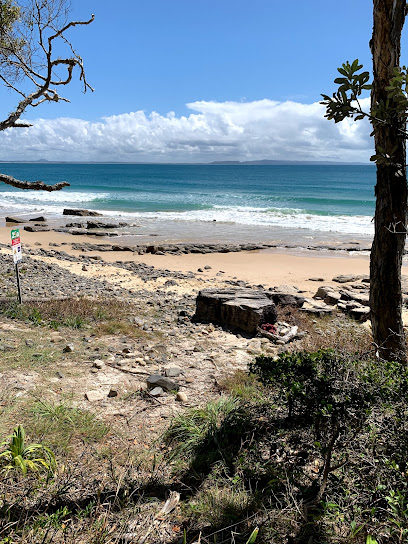
Devil's Kitchen
Discover the untouched beauty of Devil's Kitchen in Noosa Heads, a stunning coastal attraction perfect for nature lovers and adventure seekers alike.
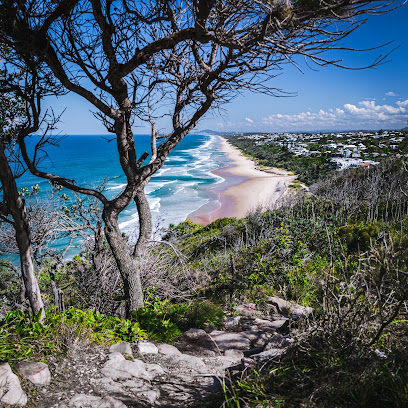
Cooloola Great Walk
Explore the breathtaking Cooloola Great Walk in Queensland, where stunning landscapes and diverse wildlife await every adventurer.

Cooloola Recreation Area, Great Sandy National Park
Discover the breathtaking landscapes and diverse ecosystems of Cooloola Recreation Area in Great Sandy National Park, Queensland.
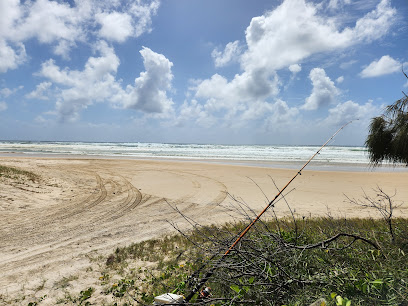
Great Sandy Resources Reserve
Explore the breathtaking landscapes and rich biodiversity of Great Sandy Resources Reserve in Noosa North Shore, Queensland.
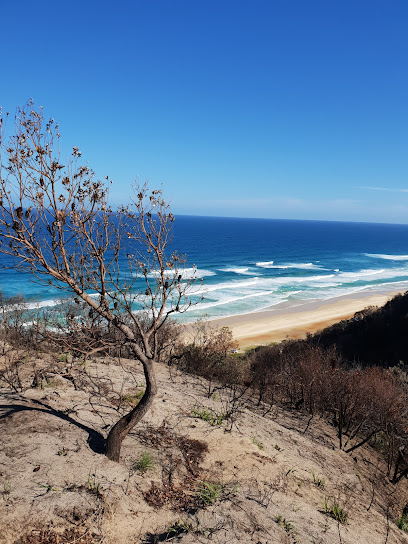
Paradise Caves
Explore the enchanting Paradise Caves at Noosa Heads, a stunning coastal attraction filled with natural beauty and captivating geological wonders.
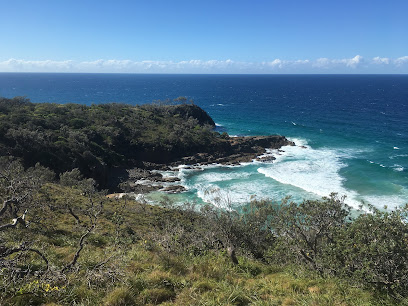
Rainbow Stairs
Explore the stunning Rainbow Stairs in Rainbow Beach, Queensland, where vibrant colors meet breathtaking coastal views, perfect for photography and relaxation.

Tin Can Bay Ferry
Experience the beauty of Tin Can Bay Ferry, where stunning coastal views meet unforgettable wildlife encounters in Queensland, Australia.

Essential places to dine
Great Sandy National Park
Discover breathtaking landscapes and diverse wildlife at Great Sandy National Park – a true gem in Queensland's natural heritage.
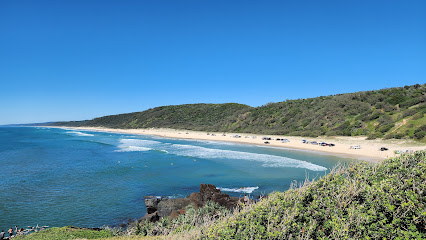
Arcobaleno on the Beach
Discover authentic Italian cuisine at Arcobaleno on the Beach in Rainbow Beach, where every dish is crafted with love and coastal views enhance your dining experience.
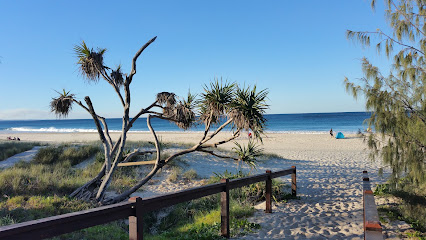
Maheno's
Experience authentic Mexican cuisine blended with Tex-Mex flair at Maheno's in Rainbow Beach - a culinary gem by the coast.
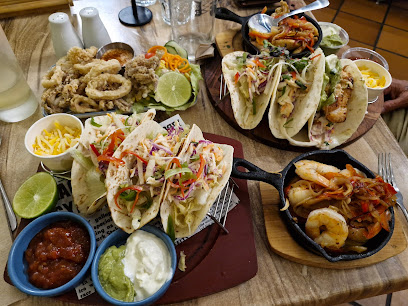
Markets, malls and hidden boutiques
Great Sandy National Park
Explore the breathtaking landscapes of Great Sandy National Park, a natural wonder in Queensland with beaches, rainforests, and diverse wildlife.
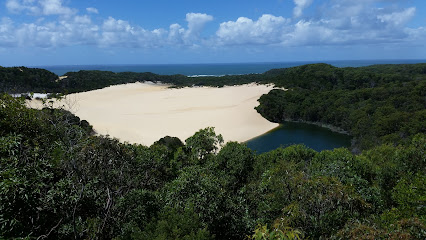
Carlo Sand Blow
Experience the breathtaking beauty of Carlo Sand Blow in Queensland, Australia—an iconic scenic spot perfect for nature lovers and adventure seekers.
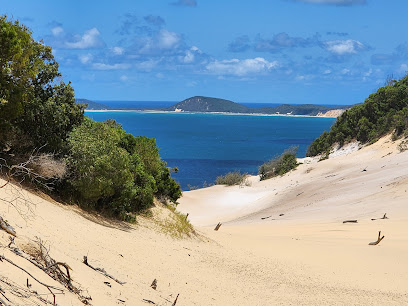
Shell
Explore Rainbow Beach with Shell: Your trusted petrol station offering convenience, fuel, and supplies for every adventure.
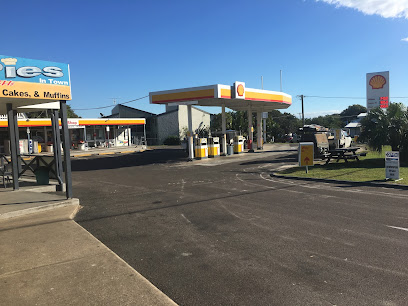
Double Island Point Lighthouse
Explore the iconic Double Island Point Lighthouse, a historical treasure in Queensland offering stunning views and rich maritime heritage.

Somewhere Over Coffee
Experience the charm of Somewhere Over Coffee in Rainbow Beach - a perfect café for breakfast, lunch, and delightful coffee.
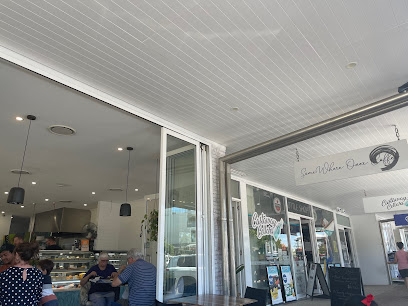
Tin Can Bay Bakehouse
Experience the best of Tin Can Bay at the charming Tin Can Bay Bakehouse, where delicious baked goods and quality coffee await.

Wolf Rock Dive Centre
Discover breathtaking dive sites and vibrant marine life at Wolf Rock Dive Centre in the heart of Rainbow Beach, Queensland.
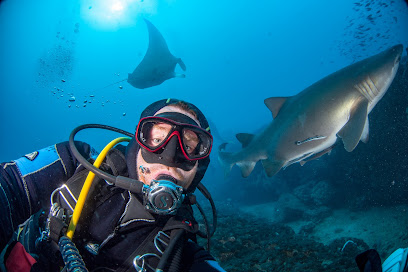
Rainbow Beach Pies & Cakes
Experience the heavenly flavors of Rainbow Beach Pies & Cakes, where every bite is a delightful journey through Queensland's baked goods.

Cooloola Great Walk
Experience the breathtaking beauty of Cooloola Great Walk—where nature and adventure await in Queensland's stunning landscapes.

Cooloola Recreation Area, Great Sandy National Park
Explore the breathtaking Cooloola Recreation Area in Great Sandy National Park, a natural wonder filled with stunning beaches and diverse wildlife.
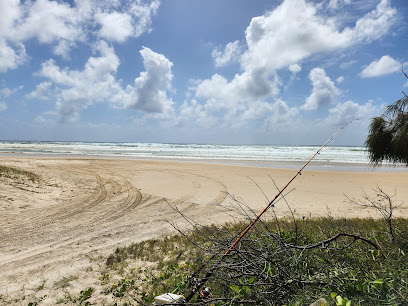
1924us
Discover unique antiques and creative designs at 1924us, a charming destination in Noosaville, Queensland, perfect for every traveler.

Rainbow Beach Hardware, Fishing and Camping
Your one-stop shop for camping, fishing, and hardware essentials in the beautiful Rainbow Beach area.
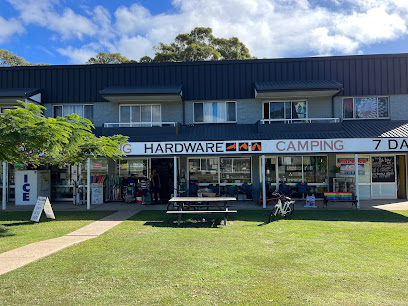
Salt and pepper
Discover Salt and Pepper, a charming coffee shop in Rainbow Beach, where exceptional brews meet a warm, inviting atmosphere perfect for relaxation.

Creme De La Creme
Experience the best of Rainbow Beach with delightful ice cream treats at Creme De La Creme, where flavor and fun come together.
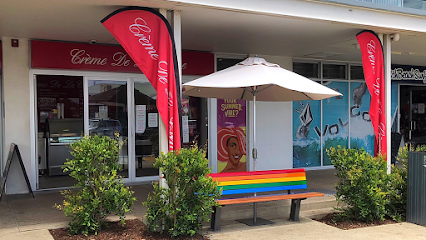
Symbolic Journey
Explore Symbolic Journey, your gateway to unique gifts and metaphysical supplies in Noosa Heads, perfect for spiritual seekers and curious travelers alike.
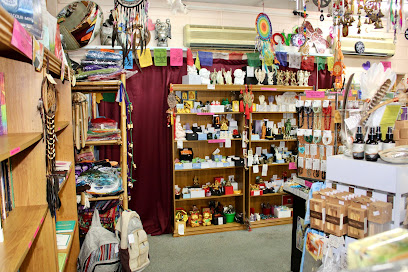
Essential bars & hidden hideouts
Rainbow Beach Hotel
Discover the vibrant ambiance and delicious offerings of the Rainbow Beach Hotel, a top pub destination on Australia's picturesque coast.
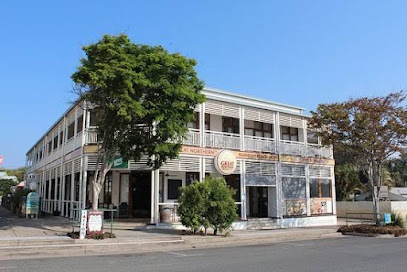
Snack Shack
Experience the best of Tin Can Bay at Snack Shack, a cozy take-away restaurant serving fresh, delicious meals with stunning bay views.
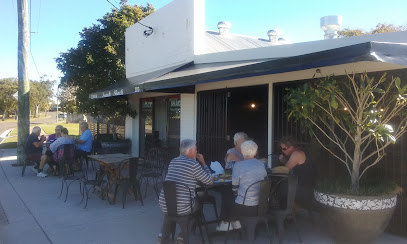
The Deck @ Sea Salt
Experience the vibrant flavors of The Deck @ Sea Salt, a premier tapas bar in Rainbow Beach, Queensland, offering exquisite local dishes in a stunning coastal setting.
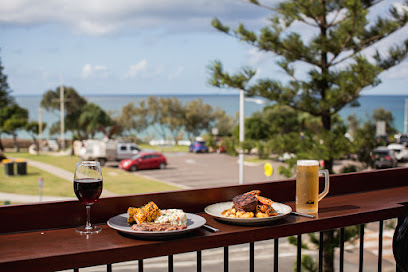
Arcobaleno on the Beach
Experience a taste of Italy at Arcobaleno on the Beach, where exquisite flavors meet stunning coastal views in Rainbow Beach.
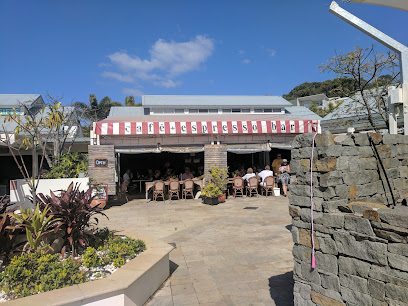
Whisky Boy
Discover the vibrant flavors of Australia at Whisky Boy, a premier bar and grill along the stunning Noosa River offering unforgettable dining experiences.
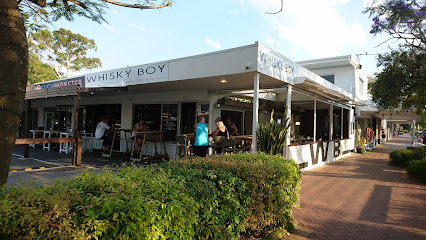
Sails Resturant
Experience the best of Queensland’s coastal cuisine at Sails Restaurant, where fresh seafood and stunning marina views await you.
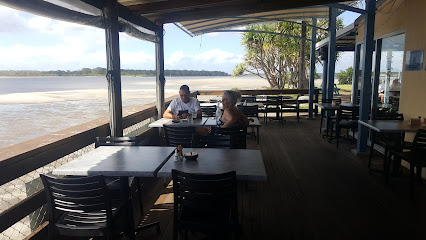
Little Parliament
Discover Little Parliament, a culinary delight in Rainbow Beach offering diverse, flavorful dishes and a warm, inviting atmosphere for all visitors.
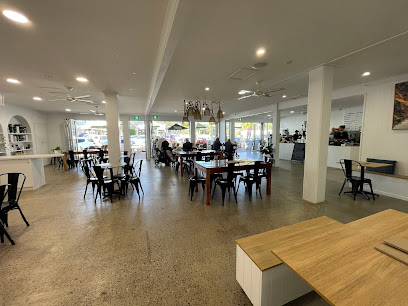
Rainbow Beach Sports Recreation and Memorial Club
Experience the heart of Rainbow Beach at the Sports Recreation and Memorial Club, where community, sports, and relaxation come together.
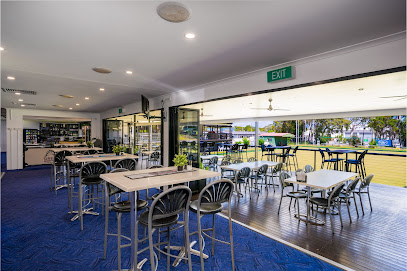
Ocean Breeze Seafoods
Experience the freshest seafood at Ocean Breeze Seafoods, Rainbow Beach - where every bite transports you to the coast of Queensland.
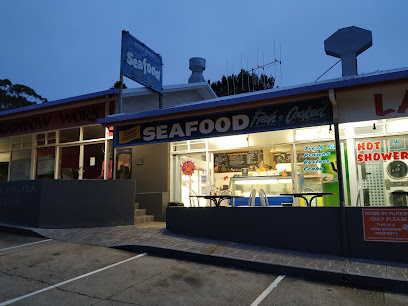
Somewhere Over Coffee
Discover culinary delights at Somewhere Over Coffee, a cozy café in Rainbow Beach, perfect for breakfast, lunch, and delicious coffee treats.

Tin Can Bay RSL Sub Branch
Discover the heart of Tin Can Bay at RSL Sub Branch - a perfect blend of community spirit and coastal charm, ideal for unwinding with friends.
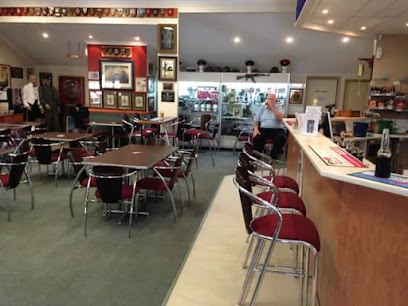
Rainbow Beach Pizza
Experience the unique flavors of Australia at Rainbow Beach Pizza, where delicious pizzas meet stunning coastal views in Rainbow Beach.
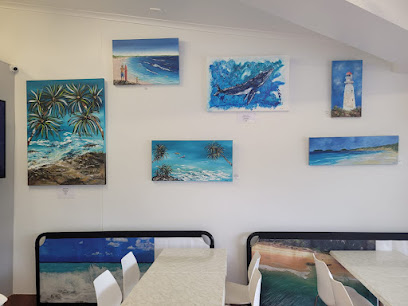
The Bottle-O at Rainbow Beach Sports Club
Explore the best of Rainbow Beach at The Bottle-O, your go-to destination for local and international beverages.
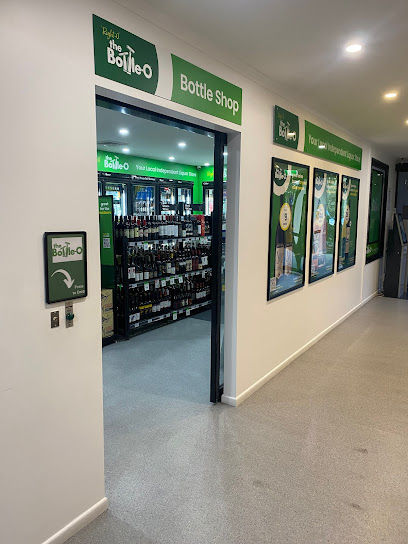
Surfer Supporter Club
Experience the flavors of the coast at Surfer Supporter Club, a vibrant restaurant in Rainbow Beach offering stunning ocean views and a relaxed atmosphere.

Thirsty Camel
Discover a wide selection of local wines, craft beers, and spirits at Thirsty Camel, the premier bottle shop in beautiful Tin Can Bay, Queensland.
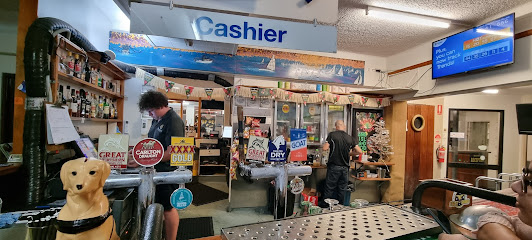
Local Phrases about Great Sandy National Park
-
- HelloG'day
[g'day] - GoodbyeSee ya
[see ya] - YesYeah
[yeah] - NoNah
[nah] - Please/You're welcomePlease/No worries
[please/no worries] - Thank youCheers
[cheers] - Excuse me/SorrySorry
[sorry] - How are you?How ya goin'?
[how ya goin'] - Fine. And you?Good. You?
[good. you?] - Do you speak English?Ya speak English?
[ya speak english?] - I don't understandI'm lost
[I'm lost]
- HelloG'day
-
- I'd like to see the menu, pleaseMenu, please
[menu, please] - I don't eat meatNo meat, mate
[no meat, mate] - Cheers!Cheers!
[cheers!] - I would like to pay, pleaseBill, please
[bill, please]
- I'd like to see the menu, pleaseMenu, please
-
- Help!Help!
[help!] - Go away!Bugger off!
[bugger off!] - Call the Police!Police!
[police!] - Call a doctor!Doctor!
[doctor!] - I'm lostLost
[lost] - I'm illSick
[sick]
- Help!Help!
-
- I'd like to buy...I wanna buy...
[I wanna buy...] - I'm just lookingJust looking
[just looking] - How much is it?How much?
[how much?] - That's too expensiveToo dear
[too dear] - Can you lower the price?Cheaper?
[cheaper?]
- I'd like to buy...I wanna buy...
-
- What time is it?What's the time?
[what's the time?] - It's one o'clockIt's one
[it's one] - Half past (10)Half ten
[half ten] - MorningMornin'
[mornin'] - AfternoonArvo
[arvo] - EveningEvenin'
[evenin'] - YesterdayYesty
[yesty] - TodayToday
[today] - TomorrowTomorra
[tomorra] - 1One
[one] - 2Two
[two] - 3Three
[three] - 4Four
[four] - 5Five
[five] - 6Six
[six] - 7Seven
[seven] - 8Eight
[eight] - 9Nine
[nine] - 10Ten
[ten]
- What time is it?What's the time?
-
- Where's a/the...?Where's the...?
[where's the...?] - What's the address?Address?
[address?] - Can you show me (on the map)?Show on map?
[show on map?] - When's the next (bus)?Next bus?
[next bus?] - A ticket (to ....)Ticket (to ...)
[ticket (to ...)]
- Where's a/the...?Where's the...?
History of Great Sandy National Park
-
Great Sandy National Park is home to the Butchulla people, the traditional custodians of the land. The park holds significant cultural sites, including middens, scarred trees, and ceremonial grounds, which provide evidence of their rich cultural history and deep connection to the land. The Butchulla people's lore and traditions continue to influence the management and conservation efforts within the park.
-
European exploration of the Great Sandy region began in the early 19th century. In 1842, explorer Andrew Petrie ventured into the area, making note of its diverse ecosystems and unique landscapes. His reports brought attention to the region's potential for settlement and resource exploitation, ultimately leading to increased European presence and the establishment of pastoral and timber industries.
-
From the late 19th century to the mid-20th century, Fraser Island, which forms part of Great Sandy National Park, was heavily logged for its valuable hardwood timber. Species such as satinay and brush box were prized for their durability and resistance to marine borers. Logging operations left a significant impact on the island's ecosystems, but also contributed to its historical narrative. The cessation of logging activities in 1991 marked a pivotal moment in the conservation of the island's natural heritage.
-
In 1992, Fraser Island was inscribed on the UNESCO World Heritage List, recognizing its outstanding universal value. The island is celebrated for its unique combination of rainforests growing on sand, extensive dune systems, and diverse freshwater lakes. The World Heritage listing has helped to ensure the protection and preservation of Fraser Island's natural and cultural values for future generations.
-
Great Sandy National Park has been the focus of numerous conservation initiatives aimed at protecting its diverse ecosystems and cultural heritage. Efforts include habitat restoration, invasive species control, and community engagement programs. The park's designation as a national park in 1971 and subsequent conservation measures have played a crucial role in safeguarding its unique landscapes and biodiversity.
-
Tourism in Great Sandy National Park has evolved significantly over the decades, with Fraser Island becoming a popular destination for nature enthusiasts, adventure seekers, and cultural tourists. Sustainable tourism practices are emphasized to minimize environmental impact and preserve the park's natural beauty. Key attractions include the island's iconic sand dunes, crystal-clear lakes, and lush rainforests, all of which contribute to its appeal as a world-renowned travel destination.
Great Sandy National Park Essentials
-
Great Sandy National Park is located in Queensland, Australia. The nearest major airport is Sunshine Coast Airport, approximately 150 kilometers away. From the airport, you can rent a car or take a shuttle service to the park. Another option is Brisbane Airport, about 250 kilometers away, from where you can also rent a car or take a train to Gympie, followed by a bus or taxi to the park.
-
Within Great Sandy National Park, the best way to get around is by 4WD vehicle, as many areas are accessible only via sandy tracks. For those without a 4WD, guided tours are available that provide transportation and expert knowledge. Walking trails are also plentiful for those who prefer to explore on foot. Ferries operate between the mainland and Fraser Island, part of the park.
-
The official currency in Australia is the Australian Dollar (AUD). Credit cards are widely accepted in the nearby towns and in larger facilities within the park, but it is advisable to carry some cash, especially when visiting remote areas. ATMs can be found in towns like Rainbow Beach and Hervey Bay.
-
Great Sandy National Park is generally a safe destination for tourists. However, always follow park guidelines and stay on marked trails. Be cautious of wildlife, such as dingoes on Fraser Island. Avoid swimming in unpatrolled beaches due to strong currents and marine stingers. There are no specific high-crime areas targeting tourists, but it is always good to stay vigilant and keep your belongings secure.
-
In case of emergency, dial 000 for immediate assistance. The park has emergency services including rangers who can help with medical and other emergencies. It’s recommended to have travel insurance that covers medical emergencies. For minor health issues, there are pharmacies in nearby towns such as Hervey Bay and Rainbow Beach.
-
Fashion: Do wear lightweight, breathable clothing and sturdy footwear. Avoid wearing flip-flops on trails. Religion: Respect indigenous sites and always follow guidelines provided by park authorities. Public Transport: If using ferries or buses, do be respectful to drivers and fellow passengers. Greetings: A friendly 'hello' or 'g'day' is common in Australia. Eating & Drinking: Do try local seafood and bush tucker. Don’t leave food unattended, as it can attract wildlife.
-
To experience Great Sandy National Park like a local, visit the lesser-known spots like Lake Wabby and the Red Canyon. Early morning and late afternoon are the best times for spotting wildlife. Engage with park rangers, who can provide valuable insights and tips. Don’t miss the stunning sunsets at Indian Head and the Champagne Pools on Fraser Island.
Nearby Cities to Great Sandy National Park
-
Things To Do in Brisbane
-
Things To Do in Surfers Paradise
-
Things To Do in Gold Coast
-
Things To Do in Byron Bay
-
Things To Do in Airlie Beach
-
Things To Do in The Whitsundays
-
Things To Do in Sydney
-
Things To Do in Canberra
-
Things To Do in Cairns
-
Things To Do in Port Douglas
-
Things To Do in Hienghène
-
Things To Do in Bourail
-
Things To Do in La Foa
-
Things To Do in Nouméa
-
Things To Do in Burnt Pine

